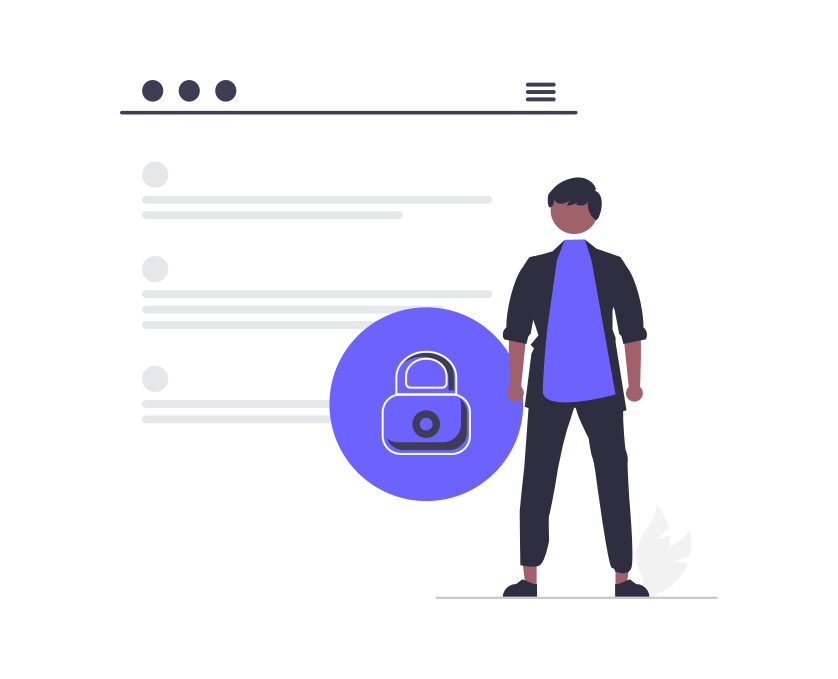It is no secret that automation helps speed up work and increase business efficiency. However, various problems with data protection and reliability may arise during implementation.
In this article, we will discuss the security measures that need to be taken to ensure the security and confidentiality of data in automated business processes.
What tasks does security include?
As you know, data protection involves a number of tasks that need to be addressed to ensure system security.
Some of them are:
- Confidentiality — ensuring that information cannot be accessed by unauthorized individuals.
- Integrity — allowing information to be modified only by authorized individuals to prevent unauthorized data changes.
- Availability — ensuring that users have access to the necessary information without any restrictions caused by technical issues or malicious software actions.
These tasks are implemented as follows:
- Data access control — helps verify that users have the correct credentials to access the system, and authorization allows controlling user access to specific data in the system. User auditing enables tracking and recording all actions in the system to quickly detect and respond to security breaches.
- Data encryption — allows transforming data into an unreadable format to protect against unauthorized access and interception. Various algorithms and methods, such as symmetric and asymmetric encryption, as well as hashing, are used for data encryption.
- Regular system updates — help ensure compliance with current security requirements and legislation, which is also an important aspect of data protection in automated systems.
Planning the protection of automated systems
When planning the protection of automated systems, the following factors should be considered:
- Defining security requirements
Determine which data and resources need to be protected, as well as the threats and risks that may arise in the context of automating business processes.
- Choosing security technologies and tools
Based on security requirements, choose the most appropriate technologies and tools such as authentication systems, access control, encryption, monitoring, etc. Here are a few tools that can help with protection:
- Protection against DDoS attacks:
- Cloudflare — a cloud service that can prevent DDoS attacks by blocking requests coming from botnets and other sources.
- Akamai — a company that provides enterprise-level protection solutions using a global content delivery network (CDN).
- AWS Shield — a protection service provided by Amazon Web Services, available to users utilizing Amazon Elastic Compute Cloud (EC2), Elastic Load Balancing (ELB), and Amazon CloudFront.
- Data encryption tools:
- SSL/TLS certificates — standard methods of protecting data transmission over the internet using the HTTPS protocol.
- VeraCrypt — a tool for encrypting data on disk. It allows creating encrypted containers and partitions on the disk that can only be opened using the correct password.
- PGP — a platform for encrypting and signing electronic messages and files. It uses asymmetric encryption, which means two keys are used for encrypting and decrypting messages.
- Multi-factor authentication tools:
- Google Authenticator — a platform that generates one-time passwords (access codes) for use in multi-factor authentication.
- Authy — this application offers multi-factor authentication via the app, SMS, and phone call.
- Duo Security — a tool that provides various authentication methods, including SMS, phone call, mobile app, and hardware key.
3. Development of Security Policy.
Create a specific policy that defines rules and procedures for information protection. It should include measures for threat prevention, incident detection and response, as well as procedures for data backup and recovery.
Typically, the policy is implemented through the following steps:
- Security Frameworks and Standards.
Сan assist in implementation, such as ISO/IEC 27001, NIST Cybersecurity Framework, HIPAA, etc. These standards establish recommendations and best practices for information protection, enabling the creation of a more effective security policy.
- Threat and Vulnerability Matrices.
These help identify threats and vulnerabilities that your organization may face, allowing for the development of an appropriate security policy. Such matrices can help assess the likelihood of specific threats and their impact on the organization.
- Risk Analysis
It’s a key stage in development. It allows for the identification of vulnerabilities and assessment of risks associated with the use of IT systems. Various methodologies can be used for risk analysis, such as OCTAVE, EBIOS, MAGERIT, etc.
4. Development of Security System Architecture.
Define the structure of the security system and the interaction between its components. This may involve configuring security parameters, creating procedures and policies, as well as training users.
5. Implementation of the Security System.
Implement the system by installing the necessary software and hardware, configuring security parameters and procedures, creating policies and procedures, and training users.
6. Testing and Support.
Conduct testing of the system to ensure its functionality and effectiveness. After the security system is put into operation, ensure its support and updates to meet changing security requirements and new threats.
It is important to remember that when optimizing a website, data protection methods should be regularly updated and adaptable to address new threats and challenges in the security field.
Conclusion
In conclusion, security and data privacy in business process automation are critical aspects that need to be considered during planning and implementation. This will help protect data, maintain the organization’s reputation, and ensure reliable and efficient operation of automated systems.
If you want to secure your website, you can contact our specialists on the sailet.pro website.
